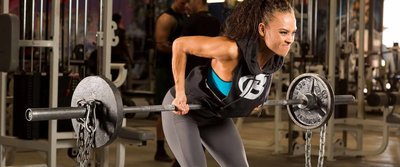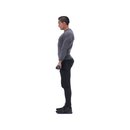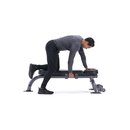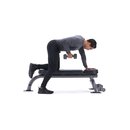Shoulders | Back | Arms | Chest | Legs | Abs & Calves | Final
In your quest for the perfect physique and the strength of a goddess, not to mention your own good health, few muscle groups should receive as much attention as the muscles of the back. Not only does a well-developed back give you that envied v-taper appearance, it provides functional strength in every day movements and gives you great posture.
There are many muscles that comprise the entire back; we will be focusing on the major muscles that your training program should be focused around. The Latissimus Dorsi (Lats), Trapezius (Traps), and Erector Spinae (Lower Back) are three of the major back muscles. Also worked synergistically in most back exercises are the Teres Major and Teres Minor, which extend and rotate the shoulder joint.
The function of the lats is to internally rotate the shoulder and to extend the shoulder. The lower back muscles are used to flex the back from side to side and to extend the spine (bend backwards). The trap muscles are used for elevating and upwardly rotating the shoulder blades.
There are many smaller muscles that comprise the back and tie-in the awesome look displayed in a rear double biceps pose. You can hit all these muscles effectively with a well-designed training program that focuses on variety and intensity.
In this article I'll discuss how to customize your back workout to focus on your own weakness and to develop overall size, strength, and symmetry.
Training Basics
Compound Movements
Most of the compound (multi-joint) exercises listed below target the teres major and minor, traps, and lats. Perform 2-3 of these movements during every back workout.
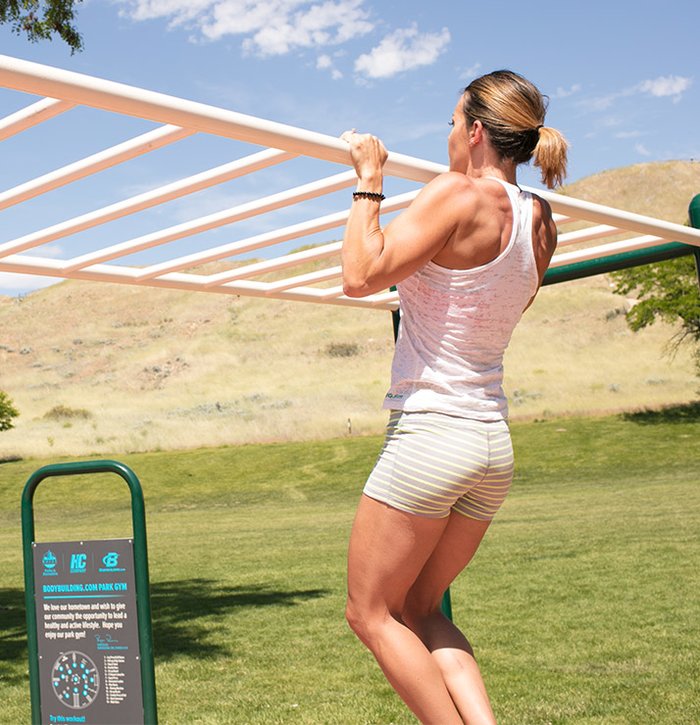
{{caption}}
Pull-up or Chin-up
- Variations: Weighted, Assisted
- Grip width: Wide, Normal, Close
- Grip type: Pronated, Supinated, Neutral
Deadlift
- Variations: Dumbbell, Smith machine, Trap bar
- Grip type: Pronated, Mixed, Neutral
Lat Pulldown
- Variations: To front, Behind neck
- Grip width: Wide, Normal, Close
- Grip type: Pronated, Supinated, Neutral
Barbell Bent Over Row
- Variations: Lying (cambered bar), Smith machine
- Grip width: Wide, Normal
- Grip type: Pronated, Supinated
T-Bar Row
- Grip type: Pronated, Supinated, Neutral
Dumbbell Row
- Variations: One arm (unilateral), Two arms, Lying
- Row width: Close to sides, Away from sides
- Grip type: Pronated, Supinated, Neutral
Cable Seated Row
- Variations: High, Low
- Grip width: Wide, Normal
- Grip type: Pronated, Supinated, Neutral
Cable One Arm Seated Row
- Variations: High, Low
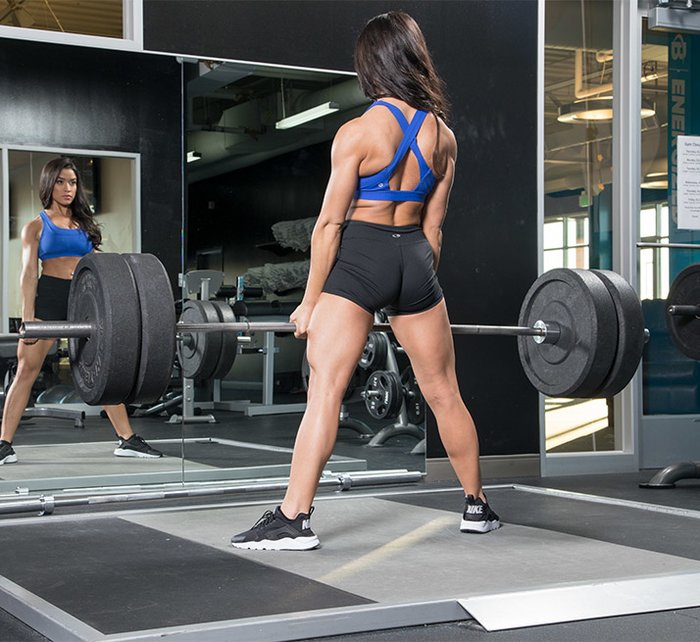
{{caption}}
Isolation Movements
There are few single joint movements that target the upper/middle back muscles because these muscles are primarily targeted through movement of the shoulder joint, shoulder blades, and elbows. Isolation movements are, however, one of the best ways to target the muscles of the lower back.
Upper/Middle Back
- Straight Arm Pull Down
Lower Back
- Back Extensions—variations: Weighted, Lying, Seated (machine), Exercise ball—Hand Placement: Behind head, Crossed over chest
- Stiff-Legged Deadlift—variations: Dumbbell, Smith machine
- Good Mornings
Synergistic Movements
In addition to exercises that directly target the back muscles, there are many exercises where the back plays a synergistic role. A synergist is simply a muscle that assists the primary target muscle in accomplishing the lift.
Incorporate these exercises into your chest and shoulder workouts to get even more back muscle stimulation.
Front Deltoids:
- Dumbbell Pullover (Chest)
- Bent Over Lateral Raise (Shoulders)
- Rear Delt Row (Shoulders)
- Upright Row (Shoulders)
- Military Press (Shoulders)
Developing Your Training Program
A well-rounded back routine should consist of at least three compound/rowing exercises that focus on the upper and middle back muscles, and 1-2 isolation movements for the lower back.
Keep your choice and order of exercises varied from workout to workout, or at least every 2-3 weeks, to ensure you are optimally targeting all the back muscles completely during your back training workouts.
Sets and Repetitions
Generally speaking, most people benefit from performing 10-15 repetitions and 2-3 working sets of a particular exercise. This will differ based on your training history, current fitness level, and goals. Women focusing on maintenance should stick to 2-3 sets of 12-15 repetitions.
Individuals aiming for mass gains should perform 3-4 sets of 8-12 repetitions. In order to gain strength, you should perform 3-4 sets of 6-10 repetitions.
You can incorporate one, two, or all three rep ranges into your program for variety. For example, women looking to gain size and strength would do well to alternate between the 8-12 and 6-10 rep ranges every other workout.
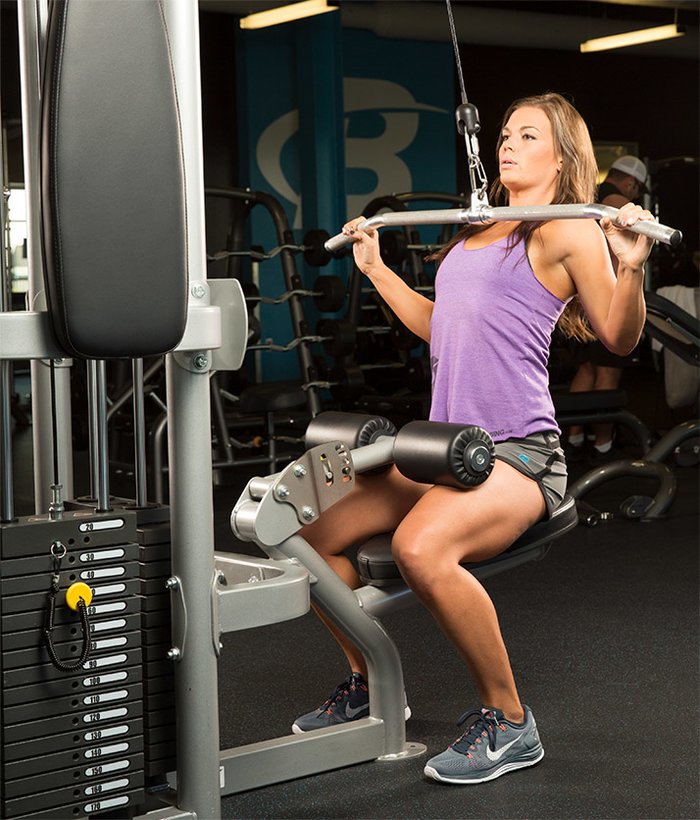
Additional Muscles Often Trained With Back
The rotator cuff and rear delts are often trained with the muscles of the back because they are hit secondarily in a lot of back exercises. In addition, you may wish to add exercises that primarily target the teres major, teres minor, and trapezius muscles to your program.
While the latter three muscles are targeted in most back exercises, if you would like to place special emphasis on any or all of them, you can do so by adding exercises that target those muscles.
You may also wish to pair biceps with your back workout. These two "pulling" movements are often paired together for an effective workout that minimizes training days in the gym.
Frequency, Duration and Intensity
One of the best styles of training is the split training technique, where each body part is worked once a week on its own day, or paired with 1-2 other muscle groups. This allows you to fully tax the muscle to stimulate new growth. If back is a weak body part for you, you may wish to prioritize it by training back twice per week. We will cover prioritization later in this article.
Your training sessions should not last more than one hour. This is plenty of time to fully exhaust the targeted body part. If your workouts are lasting longer than this, you need to stop being so chatty at the gym - you are there to train, not make friends!
I covered training intensity pretty thoroughly in part one of this series, shoulder training. What it all comes down to is whether you have it in you or not. Do you have what it takes to pull everything out of you when it really counts? When you're nearing the end of a set and the recurring question enters your mind, "Should I stop or do just one more," how do YOU answer it?
Rather than asking that question, why not tell yourself to do as many more reps as you can push out of your crumpling body? Don't say you'll do one more, two more, or even four more. Push and push until you can't pull out another rep if your life depended on it.
Why? Because the only limits you are bound to are the ones you put on yourself. If you always stop dead lifting at 175, how do you know you can't do 205?
Intensity is all in the mind. Instead of telling yourself you're satisfied because you reached failure on a set, ask yourself "What would happen if I added two more plates to the bar?" To quote the age-old saying, you never know what you can do until you try!
Targeting Specific Goals
Adding Mass Safely
Whether you're a competitor or you body build just for the love of it, a wide, thick back is the number one sign that you've done your homework and you train your butt off. Core exercises like dead lifts are the best for adding size and thickness to your back. Supplement that with a variety of rowing exercises done with heavy weights at high intensity, and you're sure to develop an award winning back in no time!
Traditional dead lifts are the staple of a good back program. The lift directly targets the spinal erectors and is assisted by the glutes, quads, hamstrings, and calves. Stabilizing the lift are the traps, scapulae, and rhomboids. You'd be pressed to find a single exercise that affects more muscles than dead lifts! Done with a heavy weight at a high intensity, this exercise builds strength, power, and size like few others can.
To perform dead lifts safely and properly, begin your first few sets with the Olympic bar only, no added weight. Ensure your form is perfect before adding weight slowly until you're completely comfortable with the exercise. I recommend not adding weight until your second dead lift workout. To begin the exercise, squat down and grasp the bar with your grip of preference (I like the mixed grip - one pronated, one supinated.).
Contract your shoulders, back, and core muscles, and in one powerful movement, extend your hips and knees upward. About halfway through the lift, or when your knees are about ¾ to full extension, extend your hips fully and bring your shoulders back to a full standing position. Return and repeat for reps.
It is important to bear in mind that dead lifts can be a dangerous exercise if not executed properly. It is essential to properly warm up the entire body through moderate cardio and light sets before performing your heavy working sets. I recommend using lifting gloves to ensure your grip doesn't slip, and wearing a weight belt on your last 2-3 heaviest sets to prevent a lower back injury.
Other great ways to focus on gaining mass are ensuring you are training at your max intensity. Also make sure you're lifting as heavy as you can, taking the last 2-3 reps to ultimate failure, meaning you can't perform another repetition of the exercise without compromising form. Perform four working sets in the 6-10 rep range to focus your workouts on mass gains. You may also choose to prioritize this body part, which will be discussed later in this article.
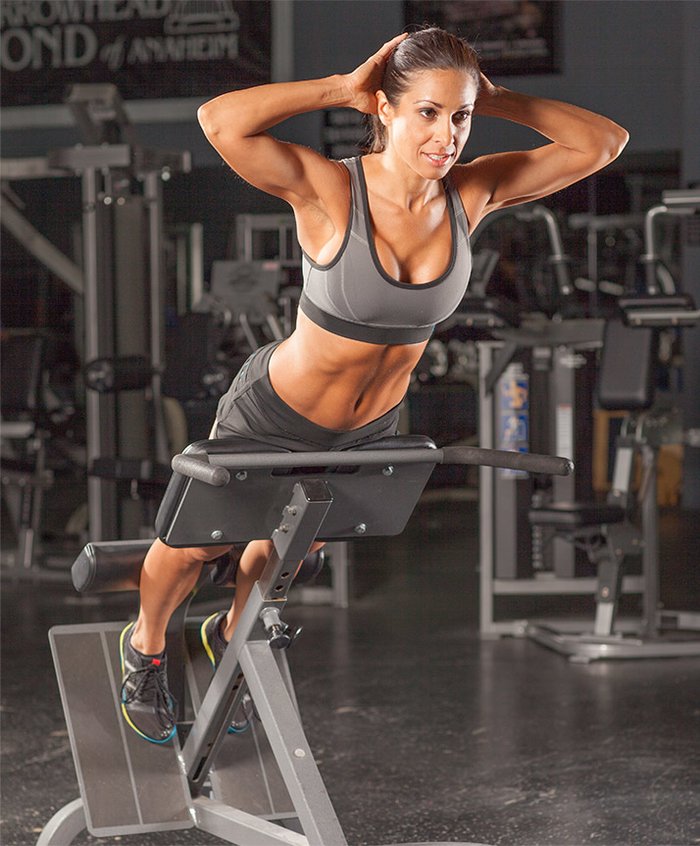
Training At Home
Training back at home is fairly easy if you have 2-3 basic items: an Olympic barbell, 2-3 sets of dumbbells, and a pull-up bar. Even with only the first two items, you can get a great back workout. You can dead lift and perform both barbell and t-bar rows with the Olympic bar. The dumbbells can be used for a variety of movements such as one arm dumbbell rows, rear delt rows, lying rows, and pullovers.
To perform t-bar rows at home with an Olympic bar, you need to be creative. Find something that you can attach under the notch of the bar where the plates are added, to use as handles. The best item is a very short resistance cable.
This enables you to keep your wrists straight while performing the exercise. You can also use a rope or a towel, but with these options you are putting more strain on your wrists, so the amount of weight you can lift is significantly less and will target your forearms and wrists more.
Exercise Variety
I've never had a problem coming up with new back exercises. There are literally dozens of variations of rowing movements, pull-ups, and pull downs. If you're fresh out of ideas, check the suggestions I've listed above to add variety and to keep stimulating your muscles for new growth.
Symmetry
Back development is extremely important to a physique competitor, but it's great for the noncompetitive female lifter as well. It shows your true strength and makes your waist and hips look smaller, balancing your upper and lower body.
Judges in physique competition look for a thick, symmetrical, wide, and nicely tapered back. Your back should be widest right under the shoulders and should taper down nicely into your lats and lower back to your waist. Good rear delt development is also very important as it ties together the entire look created through a well-developed back.
To balance out your back symmetry, you need to know what area (upper, middle, lower) of the back you need to bring up. Once you are aware of this, you can customize your workouts to focus on your weak points.
If your weak point is your upper back, perform your movements with wide grips. Choose wide grip pull-ups, wide grip lat pull downs, wide grip t-bar rows.
You can target your middle back by performing exercises that allow you the greatest range of motion, to really target your inner back muscles. Make sure not to go too heavy as to cut short your range of motion. Good exercises include one-arm dumbbell rows, barbell rows, and seated cable rows.
To focus on your lower back, your staple should be dead lifts. You can supplement dead lifts with hyperextensions and seated back extensions.
Isolation
Isolating your back muscles during training is very difficult. In fact, I believe the back muscles are the most difficult body part to train. Most beginners just go through the motions without really feeling and targeting the desired muscles. Until you are an intermediate lifter and have developed a good mind-muscle connection, you may have insignificant back workouts as well.
How can you tell? Very easily. First of all, you won't ever get a burn or feel fatigued after a back workout - unless it's in your arms and forearms! Secondly, you'll probably despise back day, because you never get any satisfaction out of it.
You can learn to isolate your back by the visualization exercise I mentioned in part one of this training series. First, know where the targeted muscle is that you're working, and know how to flex (contract) and extend (stretch) it. If you train with a partner, have him or her place their hand lightly on the working muscle to assist in this process.
Next, visualize that muscle leading the movement. Visualize it squeezing hard at the top of the movement, and then releasing slowly on the negative portion of the exercise. Don't get discouraged if it takes you a while to learn this process. It is essential to advance in your back training, and once you learn it, you won't forget it.
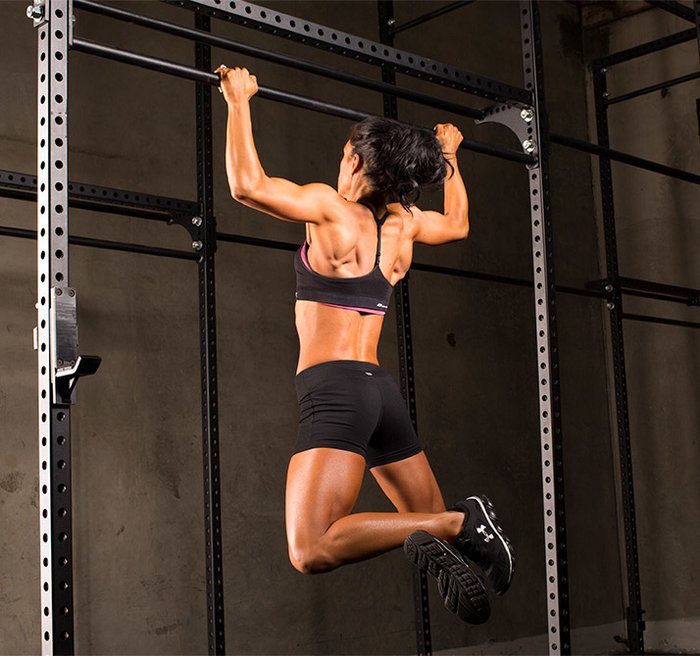
{{caption}}
Prioritization
If back is one of your weak points and you are looking to prioritize it, there is a solution - do dead lifts! No, I'm not going to let this one rest. As a woman it's difficult enough to add mass to our bodies. You will get huge benefits from lifting heavy and hardcore with powerful exercises like dead lifts. Since it takes between seven and fourteen days to recover from an extremely intense dead lifting workout, I suggest alternating your workouts every week.
Other reasons for this are to stimulate your muscles with different rep ranges, varying intensities, and an assortment of exercises to maximally stimulate your back for the most gains in the shortest period of time.
In addition, you can add several rowing exercises to your shoulder workout to get even more back work in throughout the week.
Go Heavy, Go Hard,...
Let me reiterate yet again - as a woman, you NEED to train heavy! No ifs, ands, or buts about it! If you're serious about reaching your goals, you need to pour on the poundage and not let up until you're finally where you want to be.
Don't be afraid of the weight. It can be very intimidating walking up to a barbell loaded with 135 pounds and trying to lift it from a dead squat position. Attack the weight with intensity and attitude!
Visualize the set you are about to perform in your mind - the number of reps, the burn you feel, the urge to stop your set short - and envision yourself pushing past all those obstacles, finishing your set, and feeling great about it! After this little exercise, you should be running up to that barbell, ready to attack the weight and show it who's boss!
Sample Back Training Program
This back program will focus on adding width, thickness, and overall development. Week one will be the dead lifting workout and week two will supplement week one by hitting all your back muscles for ultimate stimulation. If you have a weak area, you may choose to replace some of the exercises in week two as needed to hit that particular area.
If you wish to train back and biceps together, simply replace lat pull downs with four sets of barbell curls in the following rep ranges: 12, 10, 6, 6, 4.

BodyFit
$6.99/month- 2,500+ expert-created single workouts
- 3,500+ how-to exercise videos
- Detailed workout instruction
- Step-by-step workout tips
- Training at gym or at home
- Access to Workout Plans
- Access to Bodyfit App
- Store Discounts
Already have a Bodybuilding.com account with BodyFit? Sign In

What comes with BodyFit?

- Instructional Videos
Don't risk doing a workout improperly! Avoid injury and keep your form in check with in-depth instructional videos.

- How-to Images
View our enormous library of workout photos and see exactly how each exercise should be done before you give it a shot.

- Step-by-Step Instructions
Quickly read through our step-by-step directions to ensure you're doing each workout correctly the first time, every time.

BodyFit
$6.99/month- 2,500+ expert-created single workouts
- 3,500+ how-to exercise videos
- Detailed workout instruction
- Step-by-step workout tips
- Training at gym or at home
- Access to Workout Plans
- Access to Bodyfit App
- Store Discounts
Already have a Bodybuilding.com account with BodyFit? Sign In

What comes with BodyFit?

- Instructional Videos
Don't risk doing a workout improperly! Avoid injury and keep your form in check with in-depth instructional videos.

- How-to Images
View our enormous library of workout photos and see exactly how each exercise should be done before you give it a shot.

- Step-by-Step Instructions
Quickly read through our step-by-step directions to ensure you're doing each workout correctly the first time, every time.
If you wish to train back and biceps together, simply perform hyperextensions directly after pull ups and replace t-bar rows with four sets of EZ bar curls in the following rep ranges: 12, 10, 8, 6. Then, add another curling exercise to the workout in the same rep ranges. Other great options include preacher curls or alternating dumbbell hammer curls.


